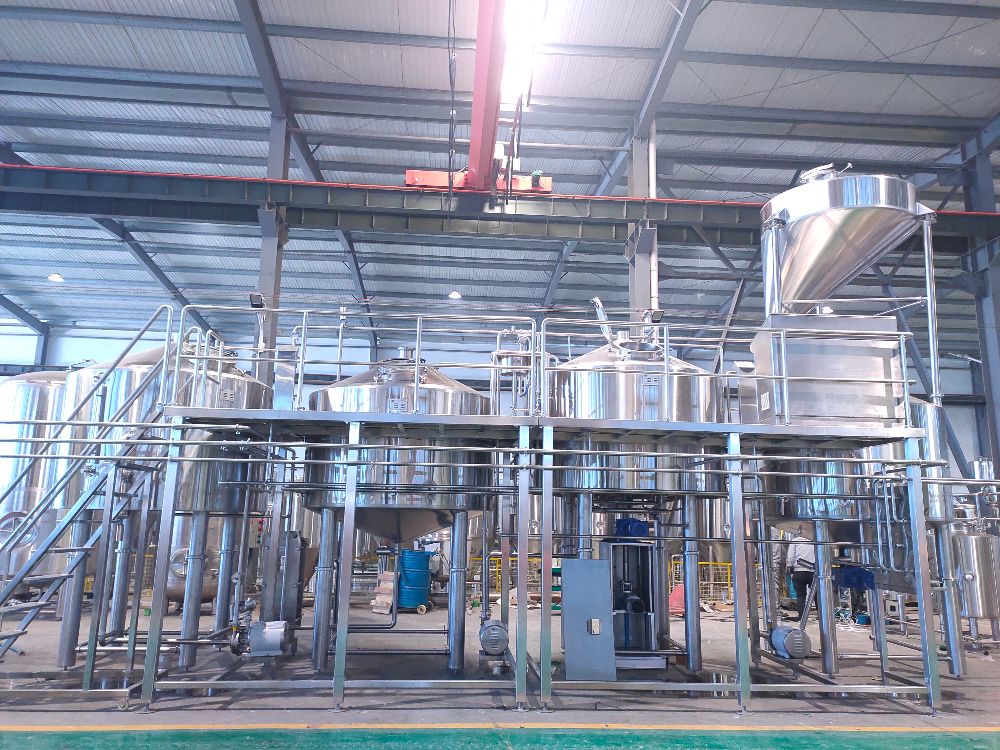Yeast activation in micro brewery
- Oct 16, 2019
- 102
- tiantai
Yeast activation in micro brewery
1.What is yeast activation
Refers to restoring yeast activity before the yeast is connected to the fermentor. The dormant yeast is effectively activated and protected.
2.Yeast activation purpose
It is to activate yeast cells, strengthen and protect the yeast cell wall that is fragile due to long-term dryness, and provide yeast cells with the nutrients needed for activation, thereby ensuring the yeast with high survival rate, high vitality and in a healthy state when it is connected to the fermenter.
3.Yeast activation is usually associated with three factors
Temperature, activation medium, and activation time.
For yeast activation, a mild activation temperature should be chosen to keep the yeast cell structure relatively stable during resuscitation. It is recommended to be between 22 and 30 ° C, and it is slightly different among strains. In general, the top-fermented yeast activation temperature is slightly higher, and the bottom-fermented yeast activation temperature is slightly lower.
Activated media It is recommended to choose boiled but cooled water or diluted wort (about 5 °P is enough). The higher osmotic pressure produced by too much sugar is not conducive to yeast rehydration activation. Distilled water lacks many mineral components and has low osmotic pressure and is usually not used for yeast activation.
The activation process is generally 10 to 20 minutes, and the dissolved oxygen is mixed for 1 to 2 times during the period, and the longest time is not more than 1 hour. If the time is too long, the yeast is seriously aged, which may affect the fermentation process and may increase the risk of microbial invasion.

4.Yeast activation step:
1).Pour the yeast into 10 times the weight of clean sterile water at 30–35 °C. Do not stir. Let it stand for 15 minutes.
2).After 15 minutes, gently stir until all the yeast is immersed in the water. Let it stand for 5 minutes. Adjust the water temperature every 5 minutes (within 10-degree difference each time), until the temperature difference with the wort is within 10 degrees.
3).Inoculate immediately after tempering.
5.Yeast vaccination notes:
Sterile: The environment and utensils should be often disinfected.
The consistency of the yeast inoculation amount: After determining the yeast feeding amount of beer type, be certain that the feeding amount is consistent between each batch.
Worts with different temperatures or types require different yeast feeding amount.
If the yeast feeding-amount is too much, it will cause excessive fermentation, producing too much higher alcohol; premature aging of the yeast, and thus yeast has odor and settle slowly.
If the yeast feeding-amount is not sufficient, the wort starts to ferment slowly that causes 'sour' beer. It also causes premature aging of the yeast.

Translated from 家酿魔法庄园
1.What is yeast activation
Refers to restoring yeast activity before the yeast is connected to the fermentor. The dormant yeast is effectively activated and protected.
2.Yeast activation purpose
It is to activate yeast cells, strengthen and protect the yeast cell wall that is fragile due to long-term dryness, and provide yeast cells with the nutrients needed for activation, thereby ensuring the yeast with high survival rate, high vitality and in a healthy state when it is connected to the fermenter.
3.Yeast activation is usually associated with three factors
Temperature, activation medium, and activation time.
For yeast activation, a mild activation temperature should be chosen to keep the yeast cell structure relatively stable during resuscitation. It is recommended to be between 22 and 30 ° C, and it is slightly different among strains. In general, the top-fermented yeast activation temperature is slightly higher, and the bottom-fermented yeast activation temperature is slightly lower.
Activated media It is recommended to choose boiled but cooled water or diluted wort (about 5 °P is enough). The higher osmotic pressure produced by too much sugar is not conducive to yeast rehydration activation. Distilled water lacks many mineral components and has low osmotic pressure and is usually not used for yeast activation.
The activation process is generally 10 to 20 minutes, and the dissolved oxygen is mixed for 1 to 2 times during the period, and the longest time is not more than 1 hour. If the time is too long, the yeast is seriously aged, which may affect the fermentation process and may increase the risk of microbial invasion.

4.Yeast activation step:
1).Pour the yeast into 10 times the weight of clean sterile water at 30–35 °C. Do not stir. Let it stand for 15 minutes.
2).After 15 minutes, gently stir until all the yeast is immersed in the water. Let it stand for 5 minutes. Adjust the water temperature every 5 minutes (within 10-degree difference each time), until the temperature difference with the wort is within 10 degrees.
3).Inoculate immediately after tempering.
5.Yeast vaccination notes:
Sterile: The environment and utensils should be often disinfected.
The consistency of the yeast inoculation amount: After determining the yeast feeding amount of beer type, be certain that the feeding amount is consistent between each batch.
Worts with different temperatures or types require different yeast feeding amount.
If the yeast feeding-amount is too much, it will cause excessive fermentation, producing too much higher alcohol; premature aging of the yeast, and thus yeast has odor and settle slowly.
If the yeast feeding-amount is not sufficient, the wort starts to ferment slowly that causes 'sour' beer. It also causes premature aging of the yeast.

Translated from 家酿魔法庄园


.jpg)

